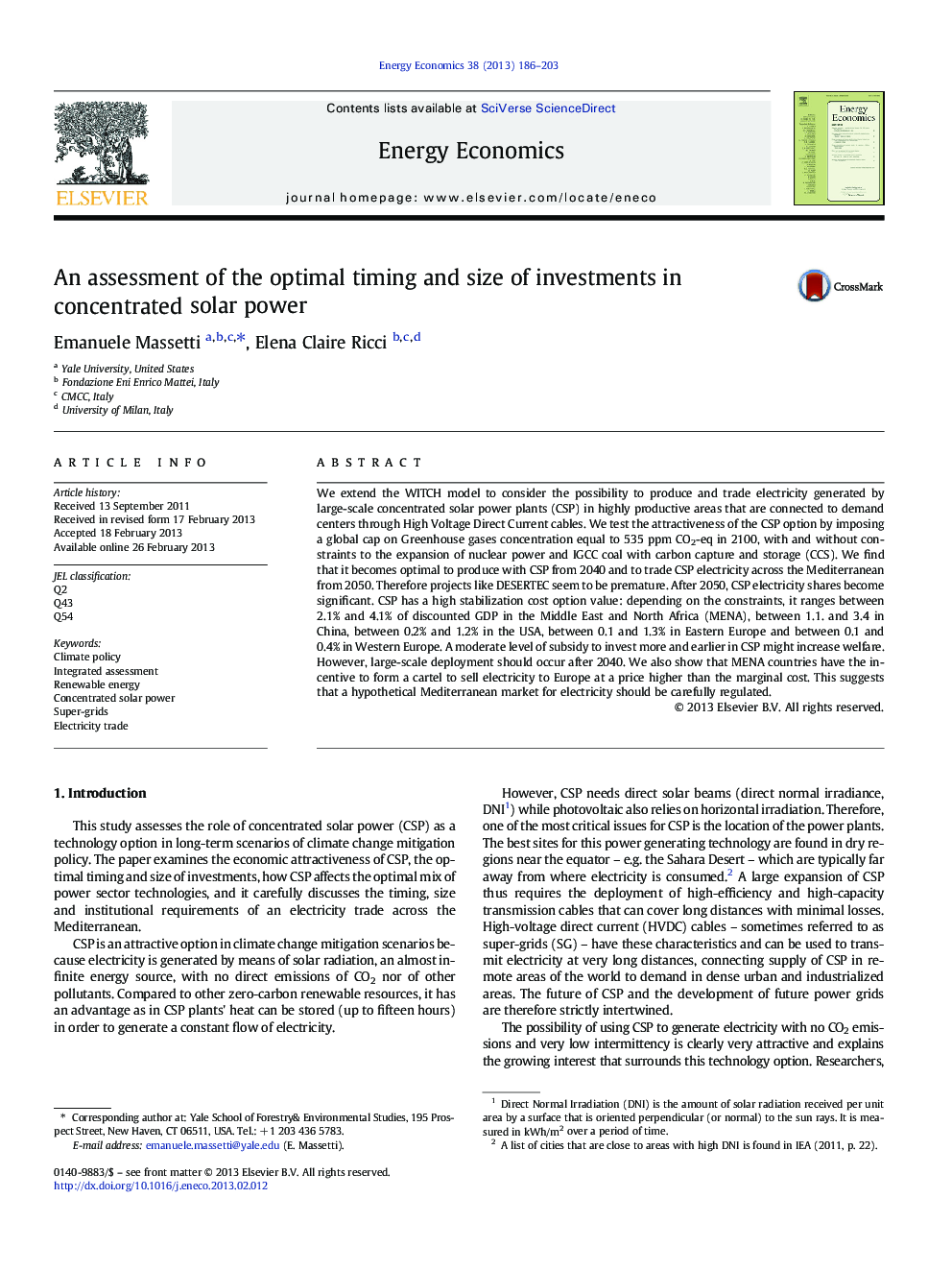| کد مقاله | کد نشریه | سال انتشار | مقاله انگلیسی | نسخه تمام متن |
|---|---|---|---|---|
| 5064927 | 1476725 | 2013 | 18 صفحه PDF | دانلود رایگان |
We extend the WITCH model to consider the possibility to produce and trade electricity generated by large-scale concentrated solar power plants (CSP) in highly productive areas that are connected to demand centers through High Voltage Direct Current cables. We test the attractiveness of the CSP option by imposing a global cap on Greenhouse gases concentration equal to 535Â ppm CO2-eq in 2100, with and without constraints to the expansion of nuclear power and IGCC coal with carbon capture and storage (CCS). We find that it becomes optimal to produce with CSP from 2040 and to trade CSP electricity across the Mediterranean from 2050. Therefore projects like DESERTEC seem to be premature. After 2050, CSP electricity shares become significant. CSP has a high stabilization cost option value: depending on the constraints, it ranges between 2.1% and 4.1% of discounted GDP in the Middle East and North Africa (MENA), between 1.1. and 3.4 in China, between 0.2% and 1.2% in the USA, between 0.1 and 1.3% in Eastern Europe and between 0.1 and 0.4% in Western Europe. A moderate level of subsidy to invest more and earlier in CSP might increase welfare. However, large-scale deployment should occur after 2040. We also show that MENA countries have the incentive to form a cartel to sell electricity to Europe at a price higher than the marginal cost. This suggests that a hypothetical Mediterranean market for electricity should be carefully regulated.
⺠An extensive use of Concentrated Solar Power (CSP) will be optimal after 2050. ⺠Trade of CSP electricity between MENA and Europe will start in 2050. ⺠CSP reduces greatly the option value of nuclear power and coal with CCS. ⺠Learning externalities motivate moderate subsidies for earlier CSP investments. ⺠MENA countries have the incentive to form a cartel to sell electricity to Europe.
Journal: Energy Economics - Volume 38, July 2013, Pages 186-203
